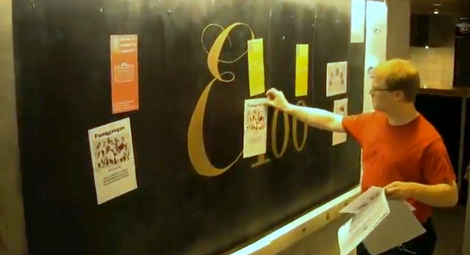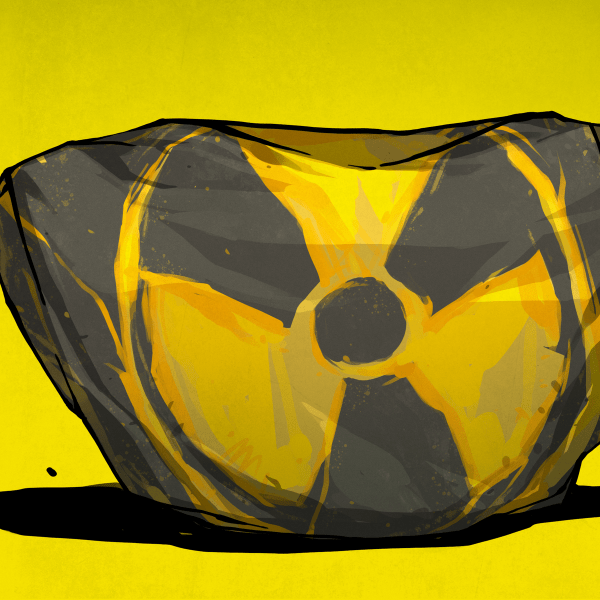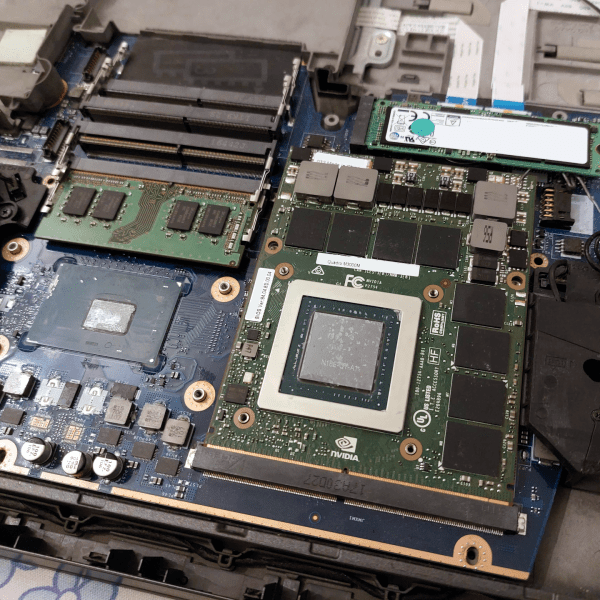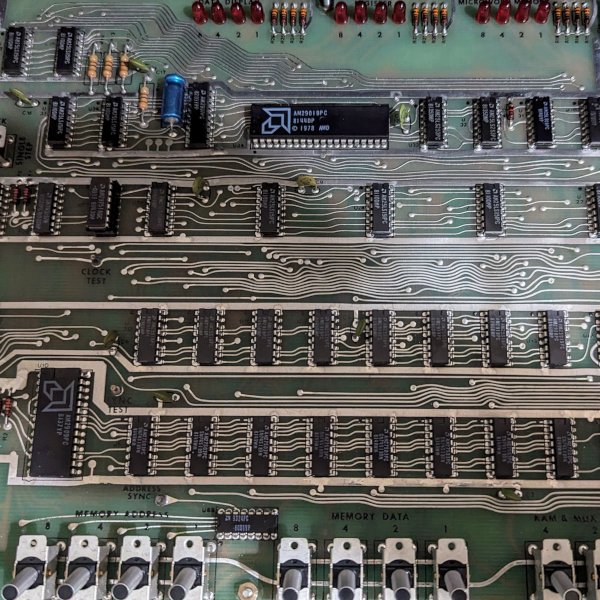
Electrical Engineers don’t need push pins. That’s because they know how to control electrons! [Sven] put his knowledge of these subatomic particles to use when building his high voltage bulletin board. It uses a set of vertically strung wires to keep paper pinned against the board. The wires have high voltage at low current travelling through them. They’re in front of the board, but not touching it, and the board is serving as a ground plane. In this way an electrostatic charge pushes (or should that be pulls?) against the paper to keep each sheet right where he places it.
In the video after the break [Sven] gives us a tour of the hardware at work here. It starts with a 12V psu which feeds a buck converter. The regulated feed is patched into a high voltage supply which was designed as a CCFL driver. Finally, a voltage doubler is used to reach the final voltage, measuring about 20 kV per wire.
Don’t worry, [Sven] says the bare wire is “almost completely safe” because of the low current being conducted.
[youtube=http://www.youtube.com/watch?v=dwHZ2C7zDmo&w=470]
















“almost completely safe”
Got to love qualifiers when talking about safety. There’s only a 0.001% chance it could turn little Billy into an instant cooked Billy meal.
Great project though. New spin on old idea.
I have had the quote “We’re gonna need another Timmy!” running through my head for the past few days and this just screams that to me. :) Anyone else remember that “Dinosaurs” show on ABC way back in the day?
Yes!
“SAY IT”
He says it’s a voltage doubler circuit, but it’s actually a voltage multiplier, which is several stages of voltage doublers.
Ben “pedant” Bradley
I am not that used to speaking english and simply used the wrong word.
Yep, if you actually RTFA, you’d notice that he writes:
“To this is attached a Villard cascade voltage multiplier”
He might not be used to reading in English. Isn’t doubling just multiplication by 2?
What happens if you touch a wire and the blackboard at the same time? Do all the papers fall off?
I wonder if he was a quick release switch. I’d label it “Make a Mess” or mam for short.
“Electronic 52 Card Pickup! press here –>”
Same tech that can be found in a Ionic Breeze air purifier !
So its like constant static – in laymans terms
If “laymans” means “tautological”
Not only is this a very interesting topic on hack-a-day, but I’ve learn a new and useful word that I had never heard before. This is hack-a-day at it’s best.
It’s the same as what we used to do for typing tests in elementary school. They would place what we were going to type on the old crt monitors and they would stick. I believe there was some old kids tv show that you could “be a part of” by mailing in for a transparency that you could cling to the crt tv and color on it.
What a horrible idea, considering that TV sets gave off soft X-rays which were the actual reason that the picture tube got ionized.
It wasn’t much, you’d have to be inches from the screen to get a dose… wait, what was the idea again? Oh, right, sitting inches away from the screen and drawing on it.
Was it really the X-rays? I always thought it’s due to the electrons hitting the fluorescent screen and thus giving the screen a negative charge.
The high voltages used by the CRT cause the static charge. The X-Rays were caused by the electron beam striking the metal mask that separated the colors. Most TVs and monitors had circuitry to prevent the voltages from getting high enough to cause X-Rays. Most CRT tubes were also made with lead-glass for shielding. The bulk of the X-Rays caused by CRTs are actually reflected back toward the rear of the tube – sitting behind a CRT would give more exposure than sitting in front of it.
Also, X-rays were emitted from the rectifier tube on old sets. Thats why it sits in a metal box with a x-ray warning on it.
The amount of LEAD in the glass of a TV tube is enough that it’s not a problem.
Yes, it’s not a problem when you’re away from the screen, but it is a problem if you spend time with body parts mere inches away.
There were/are regulations for picture tubes, but only brand new tubes have to obey them. The problem was that the drive voltage tended to drift, and on more modern sets it drifted intentionally upwards over time to combat the aging phosphor, so a new television set would emit within limits, and an old set would probably be either adjusted or drifted enough to produce harmful amounts of radiation if you were too close to it.
I did it when I was a kid, I’m perfectly fine with all of my 15 fingers and 7 toes.
I think it was the “Howdy Doody” show that had that.
The used to do it all the time on Candle Cove… I think.
+1 for 4chan creepy thread reference!
I assume that if the power goes out, all that junk ends up on the floor.
No Will, the magical rainbow energies coming from the Unicorn God will hold them in place in case of power failure.
Now the while room smells like ozone.
Interesting build, but following the KISS method would have us simply use magnets or push-pins (depending on the type of board), instead of going through all of the trouble of setting up something like this.
Still, it looks like fun.
Except that pushpins and magnets can get lost or stolen. This is more technically complicated, but it does have the advantage of not requiring any fasteners, so it’s easier on the user end of things. It’s also kind of awesome.
Follow the KISS method would not gave you any hacks. You could just draw in the table with a coal.
Using high voltage is way cooler… Using dangerous levels of hi-voltage plus ceiling burning lasers plus x-rays or radioactivity would be even cooler, and we could learn a lot in the process…
Actually, the ceiling mounted laser is in the bathroom on the other side of the wall the high voltage bulletin board is on.
KISS is for the animals and people who need to be resourceful to survive, but if MacGyver ran out of pushpins and needed to leave a message…
Couldn’t you get the same effect from a piece of particle board, an old vaccum cleaner and a very small drill bit?
“Same effect”, somewhat, only for the hearing impaired.
hehe, or a cork board and push pin.
Chance of getting zapped just to put up a piece of paper… or the having to use a magnet/pushpin…
Hmm…
I have several older commercial products that use electrostatic paper hold-down. One is a flat bed pen plotter that you can release the paper with a flip of a switch. It stands vertically. The plotter bed is essentially a very large pcb with an etched alternating trace pattern with a small HV DC supply connected. There is a thin piece of mylar covering the surface. This works *very* well for holding down the paper.
Another solution would be to go to your local office supply place and purchase some static sign paper and print or write your notices on that. A little rubbing to build a charge and that paper sticks to walls and many surfaces for months! Neat stuff.
Fun build, though. I like to see projects like this.
Back in the ’70s, Tektronix pen plotters used this trick to hold the paper in place.
I have an old HP plotter that has the same feature! It is, of course, much safer than this.
Nothing to worry about when an EE says that his contraption is almost completely safe.
The reason i said that it’s almost completely safe is that it is possible to be stupid and use the high voltage for something dangerous, you could for example decide to wrap all the wires in a large sheet of tin foil (making sure it does not touch the wall), creating a relatively huge capacitor.
Or you could just casually place a large capacitor between a wire and the wall…
Also if you are stubborn and stand there holding your finger a millimeter or two from the wire, not removing it despite the developing pain, you could get quite serious burns, this is because even though 1mA is a very low current, 1mA and 1kV is still 1W of power developing in a very small area, enough to burn skin after a while.
Sven, it was a joke ;)
nice to clarify “almost completely safe”. I am so using it in my everyday conversation now.
Cool until the power goes out…
And how much energy would you say this uses?
And I’ve done this before, a sheet of glass and and a minute on a vandergraph generator and paper will stick for hours.
Well i supply the CCFL supply with a maximum of 3A and 8V, and assuming some losses in the buck regulator and 230V->12V supply, maybe 30-40W peak. I would say that it draws maybe 10-20W normally.
Is this even green?? I mean, a push pin requires almost nothing to make, lasts for years and the cork is a renewable resource so – what are we GAINING??? It is cool, but really?? A static board for holding paper… if that thought power and voltage power was used elsewhere, could we have a better planet?
Uhhh you must be new here…
Old roland pen plotters used this for year to hold the paper in place, was always a bit freaky…
So how many people a day get dared to “lick” the wire?
Not that many, there has been other high voltage builds in the same room for many years, and unlike this one, some of the others are made to give you a harmless but quite noticeable shock.
The noticeboard is quite often used to shock others though. If you have on clean shoes with an insulating sole you can hold one of the wires and charge yourself up, then you can release this charge by touching someone else.
Well, see, if you would have explained it like that in the beginning…”so if I help you, Prince Humperdink suffers? I’ll do it”.. then everyone would be building it.
Wow, This project makes my hair stand on end . . .
+1
.
Push pins are more effective. This is just a usless waste of energy. Definetly NOT an engineer’s work.
Engineering student actually.
It is mostly useless and a lot of work to keep it running, but it is above all FUN, and it fits quite well in the recreation room of the electrical engineering program at KTH.
On the contrary, when I was in engineering school us engineers constantly did silly things like this.
It’s fun, cool, and you learn something.
We always had the most fun with voltage multipliers, actually.
And capacitors.
Used together to blow things up.
.
I didn’t mean to be rude with my earlier commentary. I apologize for that. But I consider that wasting materials and energy in a problem that could be solved in a much more efficient way is just a crime.
So basically games, movies, comics, and all other entertainment has to go? That would be a pretty boring world.
I Agree. As a hack it is quite entertaining, but it solves a problem that does not exist while presenting a couple of more drawback compared to the old cork and push-pin method.
I see major problems with heavy poster material, laminated paper, tear-off messages and flaps. Things that work by default with a push-pin without the need to waste energy.
You know, I hit one of those CCFL drivers once when I didn’t know it was on. Touched it with my thumb and my hand went numb to about mid-forearm. That was only at 1000ish volts and a few milliamps. I don’t know that I’d want to be anywhere near 20 times that, concurrent drop in amperage be damned.
/agree.
I’m getting a bit weary of people saying that something is ‘safe’ or ‘relatively-safe’ because of some combination of factors. (This being high voltage at a low amperage.)
Viewing it like this is dangerous as Electrical Safety is a game of managing multiple variables.
Try a 660v cap, fully charged on a hot day. Was enough for me to sit an pant on the floor for a few minutes. I’d never believed you could experience that much pain until then.
Broke the nose of the guy that removed the bleed resistor.
His is fed with a buck converter that limits current to 3A at 8V… roughly 0.6mA to the wires, cut in half by the limiting resistors. Doubt you’d even feel it.
But does it produce ozone?
do papers stick on the back of that board? in other words, would it stick if the wires where behind it?
Bet it’s a bitch to keep clean.
eh, just turn it off for a few seconds.
The buildup of dust on computer fans seems to suggest that removing the charge that initialy attached the dust doesn’t really do anything :(
haven’t you seen an ionic breeze commercial? You just run it under the sink for a sec
Run it under water for a few seconds…
So they just have to cut power and hose it down to clean it? Those tricky electrical engineering students! I hope they had the plumbing students install floor drains…
The curtains attachment on a vacuum cleaner, or maybe just a clean cloth.
this guy reminds me of the engineer on Team Fortress 2
will it work with insulated wires strung across the blackboard (much safer) or do they have to be bare?
“wasting materials and energy in a problem that could be solved in a much more efficient way is just a crime”
I hope you don’t waste electricity playing games on a computer when cards or dice can be used instead.
Present me with a more energy efficient way to play dice with somebody on the other side of the world and we’ll talk. Perhaps you know a way to roam around fast futuristic worlds that does not require a computer?
It’s about problems and solutions. This is a solution for a problem that does not exist.
Not true. This is a solution to a problem many cork boards suffer from: a general lack of awesomeness.
If you fail to see the awesomeness of cork and need to behave like a mid 19th century electo-alchemist and wire it up, then I think the problem is only yours.
Taking cork for granted. the first insulator for FSM sake! Next thing you’ll be unimpressed by space flight.
I’m slightly unimpressed with space flight.
Present me with a NEED to play dice with someone on the other side of the world and you’ll have a point.
I agree, the problem here is that high voltage is awesome, and I require more of it to merge my mind with AC/DC
Excellent solution
Actually, the flowing current is irrelevant to safety – what’s important is how much it can push through YOU for a short period of time.
Since it can’t push more current through you than its maximum current rating, I’d say it’s kinda relevant.
Cool!
It would be fun to attach a little joke circuit to it. For example, when you detect someone coming near the bulletin board, you cut the power randomly for a moment here and there, making the papers slide just a little or fall off. Or disable the power in certain regions where someone is trying to post a new sheet.
Also I love the phrase almost completely safe, I believe you, but it sounds like the way I would describe my new killer buzz-saw-armed death robot. “He’s almost completely incapable of killing all humans” ;-)
If you reversed the voltage, would the papers then fly off at them?
Almost completely safe = mostly harmless? sounds like a way to describe earth.
I read “almost completely safe” and first thought; someone licking it.
This is pure awesome
What if they just split the board into thin segments. Alternate between positive and ground. This way they can leave the floating wires out and just have all board. Worst case scenario they can also use this board as a bug zapper
that is a thought i have had, the problem is that the board would be significantly more mechanically complex using that strategy, first the whole wall would need to be insulated or built out 10cm to avoid arcs. this would mean about 5 times more material than is used today and a lot more work in getting it to work.